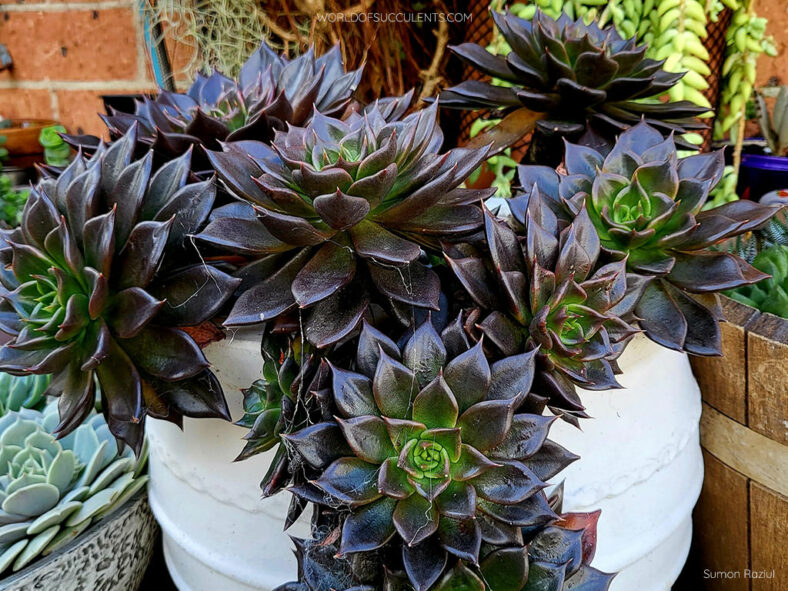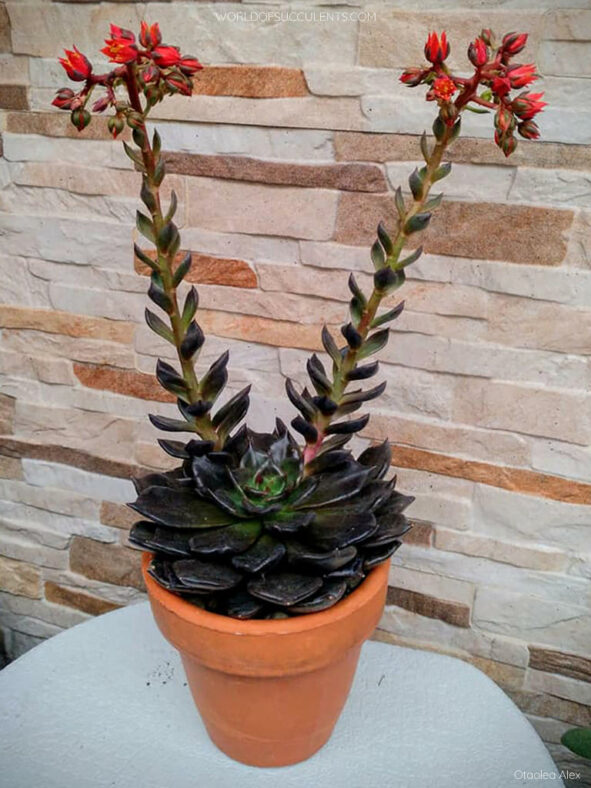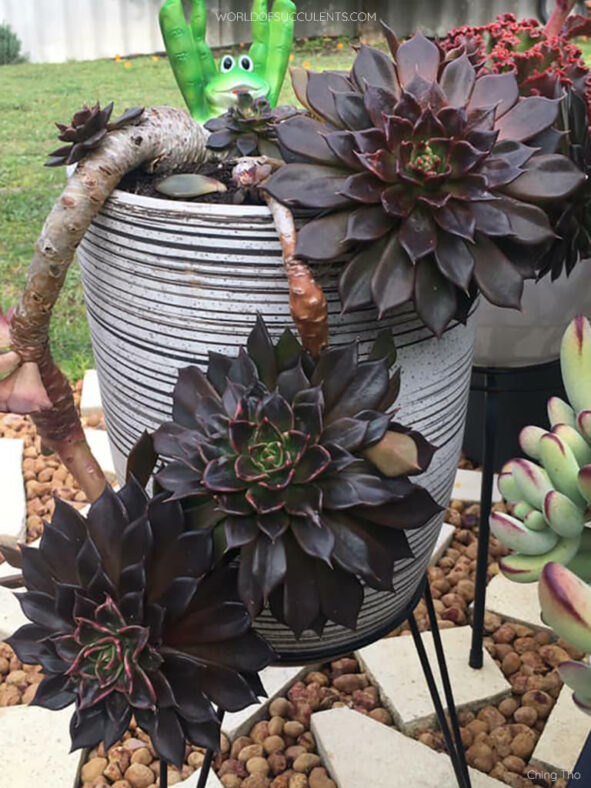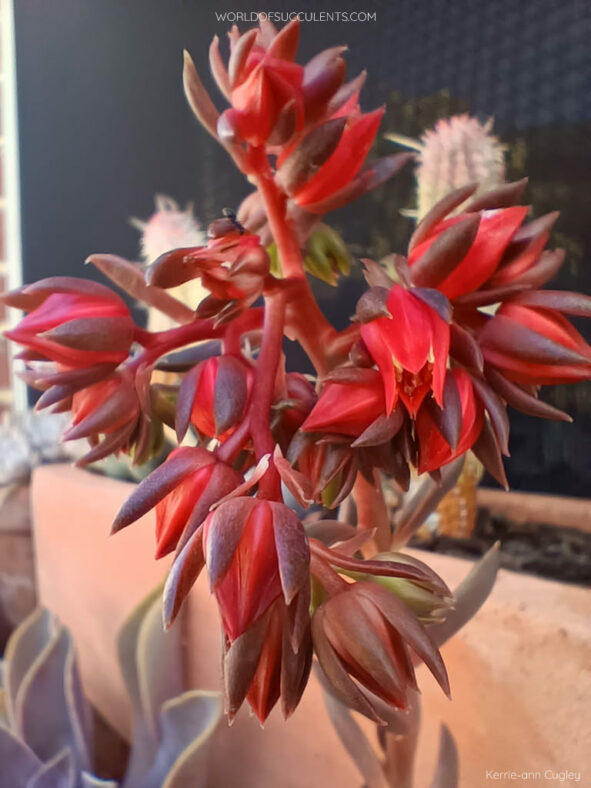Abbey Gardens introduced Echeveria 'Black Prince' in the CSSA Journal in 1970. This hybrid is quite variable, and the plant we know today as Echeveria 'Black Prince' does not entirely match the first description provided by Abbey Garden. According to ICN, the hybrid might have been lost to cultivation, and the name has been applied to other Echeverias with black leaves. Similar plants to Echeveria 'Black Prince' are distributed as Echeveria 'Black River'.
Scientific Name
Echeveria 'Black Prince'
Scientific Classification
Family: Crassulaceae
Subfamily: Sempervivoideae
Tribe: Sedeae
Genus: Echeveria
Origin
Echeveria 'Black Prince' is a hybrid created by Frank Reinelt of Capitola, California, United States. It results from a cross between Echeveria shaviana and Echeveria affinis.
Description
Echeveria 'Black Prince' is a stunning succulent that forms star-shaped rosettes of fleshy, pointed, deep burgundy to nearly black leaves. The rosettes can reach up to 5 inches (12.5 cm) in height and 6 inches (15 cm) in diameter. As the rosettes mature, they produce offsets around the base, forming a dense clump. The new growth in the center of the rosettes provides a bright green contrast to the dark outer leaves. If the plant does not receive enough light, the leaves will lose their color, and they can become coppery orange when exposed to full summer sun.
This hybrid produces red, bell-shaped flowers during late fall and winter, contrasting with the dark rosettes. The flowers appear held on tall stalks with large, leaf-like bracts.
Echeveria 'Black Prince' is often confused with Echeveria affinis, but can be easily distinguished by the numerous large bracts on its flower stalks.

Hybrids of Echeveria 'Black Prince'
How to Grow and Care for Echeveria 'Black Prince'
Light: Echeveria 'Black Prince' requires full sun to partial shade for optimal growth. Therefore, place it near the brightest window in your home. In addition, if you are moving the plant outside in spring, do it gradually and avoid exposure to intense afternoon sun.
Soil: Having soil that drains quickly is most important for growing a healthy succulent. While many growers prefer to create their own soil mix, commercial soil mixes designed for succulents will work just as well.
Temperature: High temperatures are not a problem as long as there is plenty of fresh air, but Echeveria 'Black Prince' is a tender succulent and must be brought indoors if there is a risk of freezing temperatures. It grows best in USDA Plant Hardiness Zones 10a to 11b, with average minimum winter temperatures ranging from 30°F to 50°F (-1.1°C to 10°C).
Watering: The "soak and dry" method is the preferred schedule for this plant during the growing season. Water deeply and then let the soil completely dry out before watering again. Water sparingly during the winter, only enough to keep the plant from shriveling. Above all, if you have a saucer under the pot, do not forget to empty the excess water.
Fertilizing: Although it can grow well without fertilizer, the plant may benefit from extra nutrients. Feed only during the growing season and use a water-soluble fertilizer diluted to half-strength.
Repotting: If growing it in a container, repot as needed in spring or early summer, but ensure the soil is dry before you start. Also, always use a container with drainage holes.
Propagation: Echeveria 'Black Prince' can be propagated by leaves or offsets, and spring is the best time for this.
Learn more at How to Grow and Care for Echeveria.
Toxicity of Echeveria 'Black Prince'
Echeveria 'Black Prince' has no reported toxic effects. Although the plant is safe to grow around children and pets, eating it is not advisable.
Links
- Back to genus Echeveria
- Succupedia: Browse succulents by Scientific Name, Common Name, Genus, Family, USDA Hardiness Zone, Origin, or cacti by Genus
Photo Gallery
Click on a photo to see a larger version.


